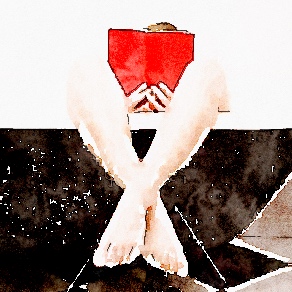Just before noon on 25 September 1513, Vasco Núñez de Balboa ordered his men to halt, then went forward alone, to complete the last stretch of the journey to the summit of the mountain they were climbing. Soon he stood, alone with his god, his ambitions and his sins on this peak rising out of the jungle in Darién; the first European to set eyes on a new ocean. A new ocean which he named Mar del Sur (South Sea) because he reached it by travelling southwards. The ocean that Magellan seven years later was to rename Pacific – coming as he was round the Horn via the straits named after him, well Magellan might have thought the Pacific peaceful.
Núñez de Balboa was no hero, no geographer, no selfless servant of his king. He marched across the Isthmus of Panama in a desperate bid to be first to reach the unknown ocean only because he knew that no less feat could save him from the scaffold. When he called halt just under the summit of the last mountain, he had sixty-seven men with him, all that was left of the one hundred and ninety desperadoes he set out with from Santa María la Antigua del Darién twenty-five days earlier. They had hatched their way through dense jungle across the Isthmus of Panama, fighting natives en route, aiming for the legendary ‘other sea’ and the land where the Indians were reportedly so rich that they ate from golden plates. Balboa’s tale is a tale of greed, in-fighting, courage and betrayal. The usual conquistador tale. Nevertheless, it’s difficult not to get carried away with the story of the march and discovery of the South Sea, even five hundred years later. And so, this particular moment in history popped up in literature in memorable style – more than once.
For this was the moment in history, this image of Vasco Núñez de Balboa standing alone on a mountain top staring at the Pacific which Keats summoned to describe his feelings on first reading Homer in English translation; and who can resists his immortal lines?
Then felt I like some watcher of the skies
When a new planet swims into his ken;
Or like stout Cortez when with eagle eyes
He star’d at the Pacific—and all his men
Look’d at each other with a wild surmise—
Silent, upon a peak in Darien.
Although I have to point out here that Keats was a bit out in his history, attributing the great moment of discovery not to Vasco Núñez de Balboa but to Hernán Cortés – the man justly famous for burning his ships to force his four hundred squabbling and reluctant men into the conquest of the Aztec empire. But that is another story.
Another man inspired by the event was the Austrian writer Stefan Zweig who, over a course of some twenty years, wrote a series of essays about what he considered pivotal moments in history. Balboa’s flight to evade punishment by offering an entire ocean for his king was one of these moments:
“At this moment Balboa commands his men to stop. None of them is to follow him, for he does not want to share this first sight of the new ocean with anyone else… he alone will be, now and for ever, the first Spaniard, the first European, the first Christian to set eyes on the still-unknown other ocean, the Pacific.
Slowly, with his heart thudding, deeply aware of the significance of the moment, he climbs on, a flag in his left hand, his sword in his right hand, a solitary silhouette… and once he has reached the peak a great view opens up before him. Beyond the mountains, wooded and green as the hills descend below him, lies an endless expanse of water with reflections as of metal in it: the sea, the new and unknown sea, hitherto only dreamt of and never seen, the legendary sea sought in vain by Columbus and all who came after him, the ocean whose waves lap against the shores of America, India and China. And Vasco Núñez de Balboa looks and looks and looks…”
(Stefan Zweig: Flight into Immortality)

And this was how Balboa discovered the Pacific.
The rest of the tale follows in a manner typical of Spanish conquistadors: When the rest of the Spaniards reached the mountain top, Father Anselm de Vara led them in singing the Te Deum laudamus, much to the bemusement of their Indian guides. Then they cut down a tree to fashion a crude cross, into which they carved the initials of the Spanish king. Descending the mountain, Balboa was the first again to reach the ocean. He named the bay San Miguel because it was now the day of Michaelmas. Wading knee-deep into the sea, with his sword in one hand and holding up an image of the Virgin Mary in the other, he took possession of the Mar del Sur for the King of Spain while a scribe noted down the events for posterity.
As for whether Balboa managed to escape justice by discovering the South Sea… and whether he found gold for himself and his king… That’s another tale.


Such a great insight into Balboa!
Thanks for bringing this to the party. Have fun meeting my friends. 🙂
LikeLiked by 1 person